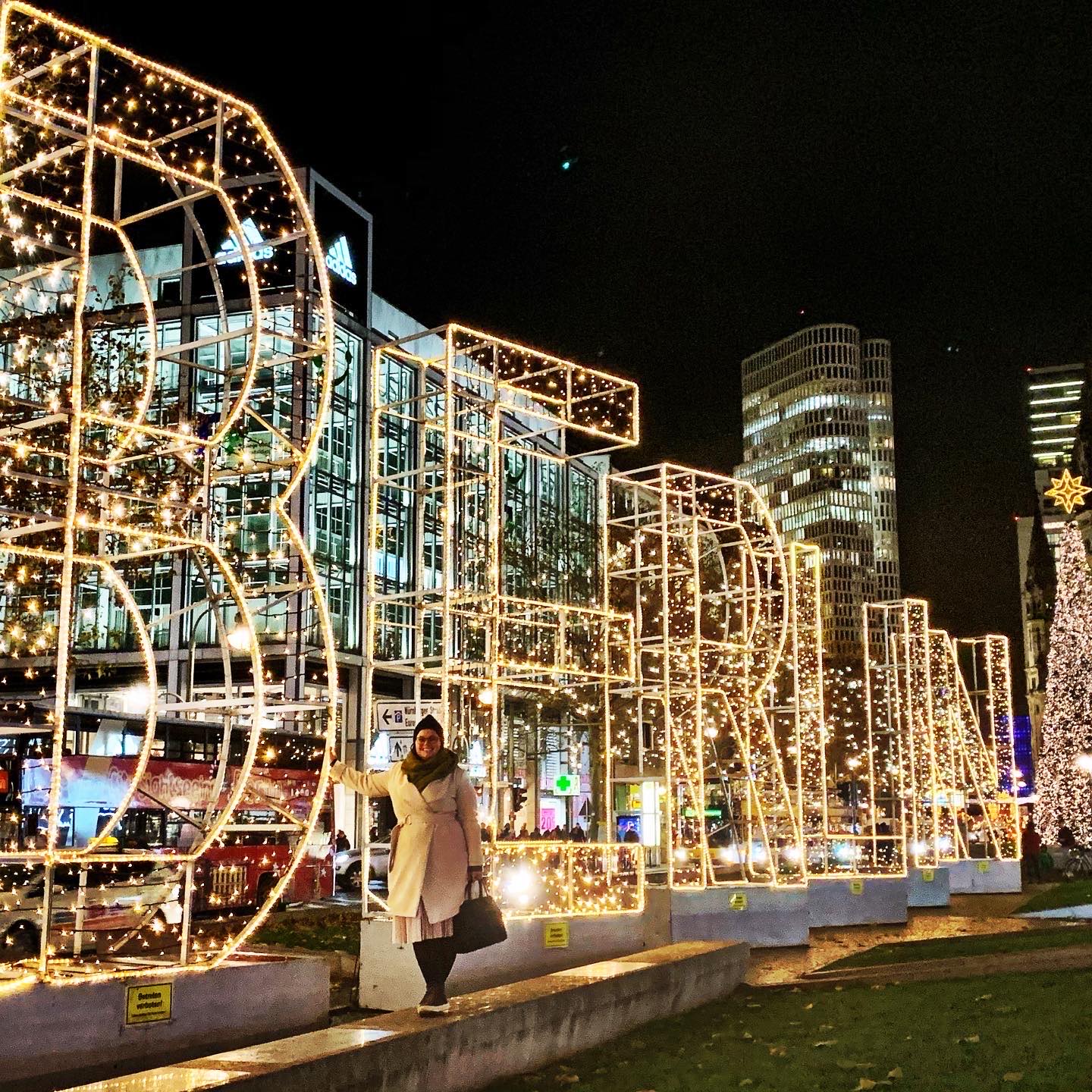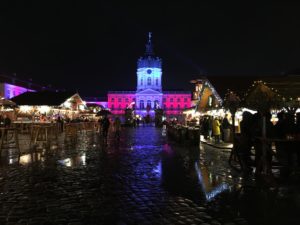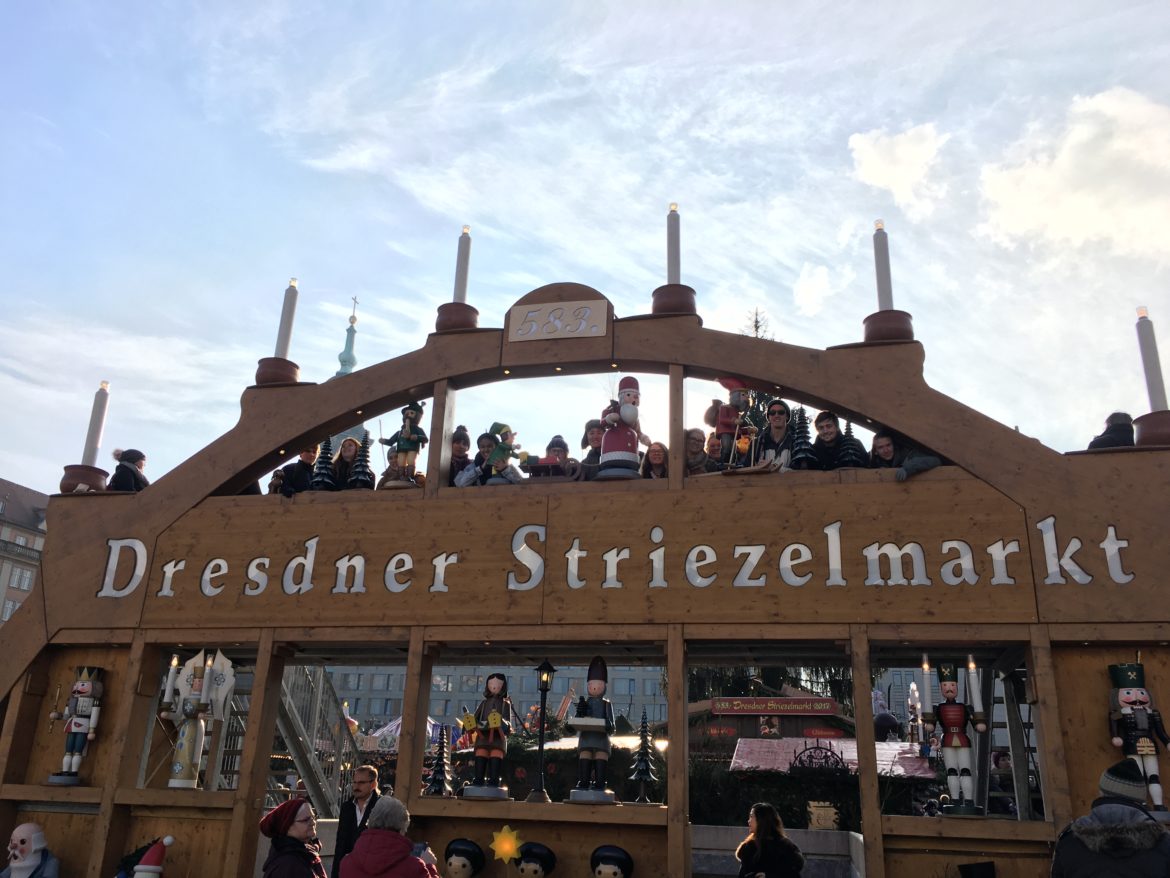Advent, Advent, ein Lichtlein brennt, erst eins, dann zwei, dann drei, dann vier. Dann steht das Christkind vor der Tür.
(Advent season, candles lit, first one, then two, then three, and four. And then the Christkind is at the door.)
Advent season starts four weeks before Christmas. It is the most observed holiday in Germany. At home, a wreath with four candles is set up, and every advent Sunday, another candle is lit to prepare for Christmas. If children are lucky, like my niece, they receive a homemade advent calendar with little gifts ranging from candies to small toys to craft materials like wool. (I am also lucky; I still get a package sent from my mom with a few trinkets and sweets to make advent a special time.) Homemade cookies are a must, and every family has a few quirky cookie cutters they love, I have a few in the shape of a hippopotamus and a squirrel and my niece will save me a cookie shaped like a shark.

The month before Christmas is not only filled with little gifts, cookies and coziness, but also gatherings with your friends. The Christmas markets in Germany are perfect for a little get-together, offering the smell of sweets and gingerbread, of mulled wine and hot chocolate. The hot beverages come in little ceramic mugs, and you can either return them for a deposit or you can keep them as a souvenir. The markets open four weeks before Christmas, and every town has at least one. In Berlin there are 80 different markets. Most of them feature little wooden houses, adorned with twinkling lights or little toyscapes depicting what is being sold. From the more mundane Christmas gifts like socks and candles, the small shops offer a variety of toys, calendars, regional delicacies, figurines for nativity scenes, cookie cutters, Christmas tree ornaments or colorful stars to hang in windows.

On that first day of the Weihnachtsmarkt (Christmas Market) season, I take AIFS students to the market at Charlottenburg Palace which makes for a gorgeous backdrop and creates a very festive atmosphere. It’s fun to scope out the different stalls, there are always a few I come back to every year. One sells magnetic bookmarks with hand painted sceneries, another stall has Berlin specialties, like giant Schokoküsse, which are chocolate kisses, a soft marshmellowy center covered by chocolate sitting on a wafer, and they come in all sorts of flavors. I love the after-eight minty one.
And every year we spend a day in Dresden, a town on the river Elbe just two hours from Berlin, to explore the season highlights there. My favorite market in Dresden is in the courtyard of the castle, and it’s medieval themed. The vendors are in costumes, prices are in Taler instead of Euros and there is a brass band playing. There are no plastic forks or paper plates, food is served on ceramic plates instead and there are little huts to sit in to drink a hot cider or cocoa and munch on candied nuts. Popular food options are Langos, a fried bread served with sour cream and cheese from Hungary, Käsespätzle, German Mac’n’Cheese, any kind of bratwurst or Grünkohl mit Pinkel, kale stew served with sausage. The atmosphere is festive and quite old-fashioned.

Dresden’s most famous Christmas market there is the Striezelmarkt, named for the typical Christmas bread of Stollen (used to be Striezel). A Stollen is a buttery, yeasty bread, with raisins and candied fruit, heavily doused in icing sugar, and beloved all over Germany. The one from Dresden is a protected trademark and is shipped worldwide. This market has been in session since 1434, and I am sure it’s going to be wonderful to visit next year for the 587th anniversary.
